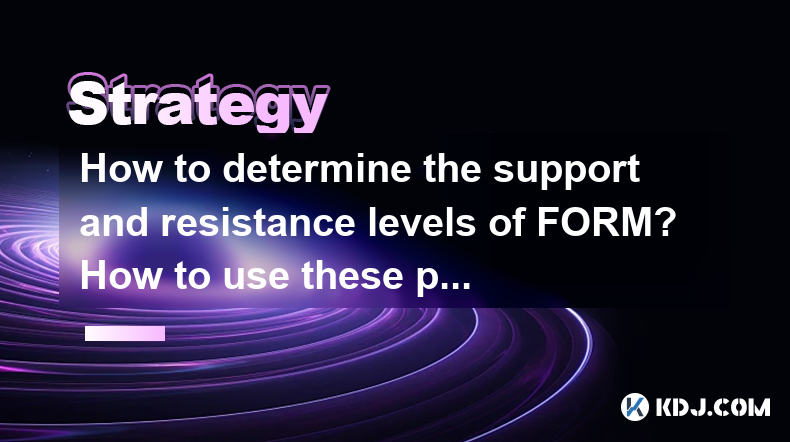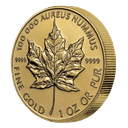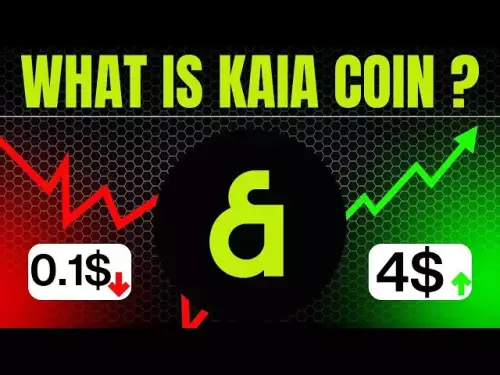-
 bitcoin
bitcoin $112715.707551 USD
-1.71% -
 ethereum
ethereum $4101.475385 USD
-3.01% -
 tether
tether $1.000644 USD
-0.02% -
 bnb
bnb $1207.619465 USD
-6.77% -
 xrp
xrp $2.501451 USD
-3.98% -
 solana
solana $202.947124 USD
-3.32% -
 usd-coin
usd-coin $1.000295 USD
0.04% -
 dogecoin
dogecoin $0.203884 USD
-4.47% -
 tron
tron $0.317154 USD
-1.72% -
 cardano
cardano $0.695009 USD
-4.43% -
 hyperliquid
hyperliquid $38.853961 USD
-8.23% -
 chainlink
chainlink $18.988674 USD
-4.64% -
 ethena-usde
ethena-usde $1.000233 USD
-0.03% -
 stellar
stellar $0.337050 USD
-3.63% -
 bitcoin-cash
bitcoin-cash $536.861728 USD
-1.28%
How to determine the support and resistance levels of FORM? How to use these positions when buying and selling?
Use historical data, moving averages, trend lines, and Fibonacci levels to identify FORM's support and resistance for informed trading decisions.
Apr 30, 2025 at 10:49 pm

Understanding the support and resistance levels of a cryptocurrency like FORM is crucial for making informed trading decisions. These levels help traders identify potential price points where the asset might reverse or continue its trend. In this article, we will explore how to determine the support and resistance levels of FORM and how to use these positions effectively when buying and selling.
Identifying Support and Resistance Levels
Support and resistance levels are key concepts in technical analysis. Support levels are prices at which an asset tends to find buying interest, preventing it from falling further. Conversely, resistance levels are prices at which an asset tends to face selling pressure, preventing it from rising further. To identify these levels for FORM, you can use historical price data and technical indicators.
Historical Price Data: Look at past price charts of FORM to identify levels where the price has repeatedly bounced off or struggled to break through. These levels can be considered potential support and resistance points.
Technical Indicators: Tools like moving averages, trend lines, and Fibonacci retracement levels can help pinpoint these crucial levels. For instance, the 50-day and 200-day moving averages are often used to identify long-term support and resistance.
Using Moving Averages to Determine Levels
Moving averages smooth out price data to create a single flowing line, making it easier to identify trends. For FORM, you can use the following steps to determine support and resistance using moving averages:
Select Moving Averages: Choose the 50-day and 200-day moving averages, as these are commonly used for long-term analysis.
Plot the Moving Averages: Add these moving averages to your FORM price chart. The 50-day moving average will be more responsive to recent price changes, while the 200-day moving average will provide a longer-term perspective.
Identify Crossovers: When the 50-day moving average crosses above the 200-day moving average, it may indicate a potential support level. Conversely, when it crosses below, it may signal a resistance level.
Observe Price Reactions: Pay attention to how the price of FORM reacts when it approaches these moving averages. If the price consistently bounces off the 50-day moving average, it could be considered a support level.
Using Trend Lines to Determine Levels
Trend lines are another effective tool for identifying support and resistance levels. Here’s how you can use them for FORM:
Draw Trend Lines: Identify the highest and lowest points on the FORM price chart over a specific period. Connect these points to create trend lines. An ascending trend line connects higher lows, indicating potential support, while a descending trend line connects lower highs, indicating potential resistance.
Validate Trend Lines: A trend line is considered valid if it touches the price at least three times. The more times the price touches the trend line without breaking it, the stronger the support or resistance level.
Watch for Breakouts: If the price of FORM breaks through a trend line, it may signal a change in the trend. A break above a resistance trend line could indicate a new support level, while a break below a support trend line could indicate a new resistance level.
Using Fibonacci Retracement to Determine Levels
Fibonacci retracement levels are based on the idea that markets tend to retrace a predictable portion of a move, after which they continue in the original direction. Here’s how to use Fibonacci retracement for FORM:
Identify a Significant Move: Choose a significant price move on the FORM chart, either an uptrend or a downtrend.
Apply Fibonacci Levels: Use a charting tool to draw Fibonacci retracement levels from the low to the high of the move (for an uptrend) or from the high to the low (for a downtrend). Common retracement levels are 23.6%, 38.2%, 50%, 61.8%, and 78.6%.
Observe Price Reactions: Watch how the price of FORM reacts at these levels. If the price finds support or resistance at one of these levels, it can be considered a significant level for future trading.
Using Support and Resistance Levels for Buying and Selling
Once you have identified the support and resistance levels for FORM, you can use these levels to make informed buying and selling decisions. Here’s how:
Buying at Support Levels: When the price of FORM approaches a support level, it may be a good opportunity to buy. The idea is that the price will bounce off the support level and continue its upward trend. To execute this strategy:
Set a Buy Order: Place a buy order slightly above the identified support level to ensure you enter the trade if the price bounces.
Set a Stop-Loss: To manage risk, set a stop-loss order below the support level. If the price breaks through the support, it may indicate a false breakout, and the stop-loss will help limit your losses.
Set a Take-Profit: Determine a target price based on the next resistance level or a percentage gain you are comfortable with. Place a take-profit order at this level to secure your profits.
Selling at Resistance Levels: When the price of FORM approaches a resistance level, it may be a good opportunity to sell. The idea is that the price will struggle to break through the resistance and may reverse. To execute this strategy:
Set a Sell Order: Place a sell order slightly below the identified resistance level to ensure you exit the trade if the price fails to break through.
Set a Stop-Loss: To manage risk, set a stop-loss order above the resistance level. If the price breaks through the resistance, it may indicate a false breakout, and the stop-loss will help limit your losses.
Set a Take-Profit: Determine a target price based on the next support level or a percentage gain you are comfortable with. Place a take-profit order at this level to secure your profits.
Trading Breakouts: If you believe the price of FORM will break through a resistance level, you can trade the breakout. To execute this strategy:
Set a Buy Order: Place a buy order slightly above the identified resistance level to enter the trade if the price breaks through.
Set a Stop-Loss: To manage risk, set a stop-loss order below the breakout level. If the price fails to sustain the breakout, the stop-loss will help limit your losses.
Set a Take-Profit: Determine a target price based on the next resistance level or a percentage gain you are comfortable with. Place a take-profit order at this level to secure your profits.
FAQs
Q: How often should I update my support and resistance levels for FORM?A: It's important to regularly review and update your support and resistance levels for FORM, especially in a volatile market. You might consider checking and adjusting these levels weekly or even daily if you are an active trader.
Q: Can support and resistance levels change over time?A: Yes, support and resistance levels can change as new price data comes in. What was once a strong support level might become a resistance level if the price breaks through it and fails to return. Always stay vigilant and adjust your levels based on the latest market conditions.
Q: Are there any tools or software that can help me identify support and resistance levels for FORM?A: Yes, there are many charting platforms and technical analysis tools available that can help you identify support and resistance levels for FORM. Popular options include TradingView, MetaTrader, and Coinigy, which offer advanced charting features and indicators to assist in your analysis.
Q: How can I combine support and resistance levels with other indicators for a more robust trading strategy?A: Combining support and resistance levels with other technical indicators, such as the Relative Strength Index (RSI), Moving Average Convergence Divergence (MACD), or Bollinger Bands, can provide a more comprehensive view of the market. For instance, if the price of FORM is approaching a support level and the RSI indicates it is oversold, it might be a stronger signal to buy.
Disclaimer:info@kdj.com
The information provided is not trading advice. kdj.com does not assume any responsibility for any investments made based on the information provided in this article. Cryptocurrencies are highly volatile and it is highly recommended that you invest with caution after thorough research!
If you believe that the content used on this website infringes your copyright, please contact us immediately (info@kdj.com) and we will delete it promptly.
- BTC, ETH, and Crypto Presales: Navigating the Storm with MoonBull & LivLive
- 2025-10-15 11:05:13
- BlackRock's Bitcoin ETF Buzz Down Under: Australia's Crypto Scene Heats Up
- 2025-10-15 11:45:15
- Trump, Bitcoin, and Trump Media: A New York Minute on Crypto's Latest Twist
- 2025-10-15 11:05:13
- Altcoin Season Incoming? Historical Setups and Trends to Watch
- 2025-10-15 11:45:15
- Crypto Scam Crackdown: Cambodian Executive, Bitcoin Seizure, and a $14 Billion Heist
- 2025-10-15 11:10:00
- Bitcoin's Wild Ride: Structural Demand Survives the Liquidation Tsunami
- 2025-10-15 11:10:00
Related knowledge

Practical parameter settings for a Bitcoin multi-timeframe moving average system
Sep 18,2025 at 10:54pm
Optimizing Timeframe Combinations for Bitcoin Trading1. Selecting appropriate timeframes is crucial when building a multi-timeframe moving average sys...

How can I filter out false breakouts in Dogecoin high-frequency trading?
Sep 22,2025 at 01:00am
Understanding False Breakouts in Dogecoin Trading1. A false breakout occurs when Dogecoin's price appears to move beyond a defined support or resistan...

Techniques for identifying tops and bottoms in the Bitcoin on-chain NVT model
Sep 20,2025 at 07:54pm
Understanding the NVT Model in Bitcoin Analysis1. The Network Value to Transactions (NVT) ratio is often described as the 'P/E ratio' of the cryptocur...

What does the surge in open interest in Bitcoincoin futures mean?
Sep 20,2025 at 11:18pm
Understanding the Surge in Dogecoin Futures Open Interest1. A surge in open interest within Dogecoin futures indicates a growing number of active cont...

How can I use the Ethereum USDT premium to gauge market sentiment?
Sep 18,2025 at 11:55pm
Understanding the Ethereum USDT Premium1. The Ethereum USDT premium refers to the price difference between USDT (Tether) traded on Ethereum-based plat...

What should I do if Ethereum staking yields decline?
Sep 20,2025 at 06:18am
Understanding the Causes Behind Declining Ethereum Staking Yields1. The Ethereum network transitioned to a proof-of-stake consensus mechanism with the...

Practical parameter settings for a Bitcoin multi-timeframe moving average system
Sep 18,2025 at 10:54pm
Optimizing Timeframe Combinations for Bitcoin Trading1. Selecting appropriate timeframes is crucial when building a multi-timeframe moving average sys...

How can I filter out false breakouts in Dogecoin high-frequency trading?
Sep 22,2025 at 01:00am
Understanding False Breakouts in Dogecoin Trading1. A false breakout occurs when Dogecoin's price appears to move beyond a defined support or resistan...

Techniques for identifying tops and bottoms in the Bitcoin on-chain NVT model
Sep 20,2025 at 07:54pm
Understanding the NVT Model in Bitcoin Analysis1. The Network Value to Transactions (NVT) ratio is often described as the 'P/E ratio' of the cryptocur...

What does the surge in open interest in Bitcoincoin futures mean?
Sep 20,2025 at 11:18pm
Understanding the Surge in Dogecoin Futures Open Interest1. A surge in open interest within Dogecoin futures indicates a growing number of active cont...

How can I use the Ethereum USDT premium to gauge market sentiment?
Sep 18,2025 at 11:55pm
Understanding the Ethereum USDT Premium1. The Ethereum USDT premium refers to the price difference between USDT (Tether) traded on Ethereum-based plat...

What should I do if Ethereum staking yields decline?
Sep 20,2025 at 06:18am
Understanding the Causes Behind Declining Ethereum Staking Yields1. The Ethereum network transitioned to a proof-of-stake consensus mechanism with the...
See all articles


























![Staking ATH: How To Stake $ATH in October 2025 with 523% APY — [Step-By-Step Guide] Staking ATH: How To Stake $ATH in October 2025 with 523% APY — [Step-By-Step Guide]](/uploads/2025/10/15/cryptocurrencies-news/videos/staking-ath-stake-ath-october-apy-stepstep-guide/68eef94d80903_image_500_375.webp)















































